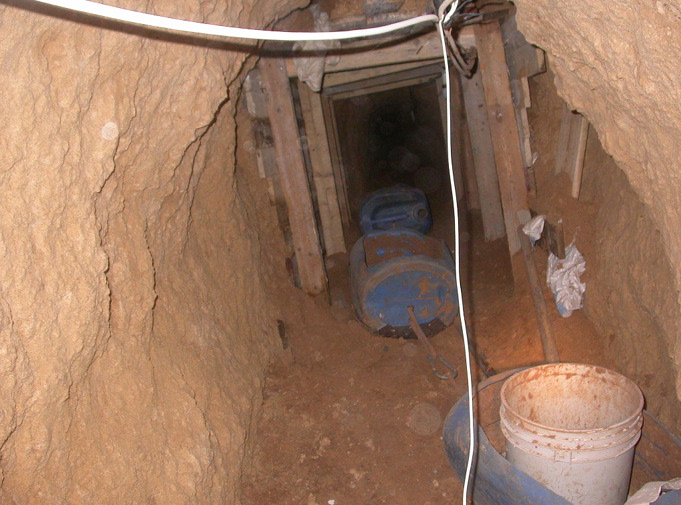by Anna Lekas Miller
Minutes before the ceasefire, Israeli F-16s were still dropping bombs on Gaza.
Still, at 9 PM exactly—the time that Egypt, Hamas and Israel agreed that the ceasefire would go into effect—Gazans excitedly took to the streets, hugging and kissing their neighbors in jubilation and firing celebratory fireworks from the rooftops. “Allahu Akhbar” rang through the tiny strip of land from the mosque loudspeakers, echoing gratitude across Gaza.Even though Israeli drones still buzzed overhead, a ceasefire means the difference between being pummeled by air and naval strikes, and not being pummeled by air and naval strikes—which to Gaza right now must mean the world.
The past week has seen pure tragedy in Gaza. After the assassination of Hamas leader Ahmed al-Jabari, what began as a border clash escalated into an assault that killed 157 Palestinians and 5 Israelis, and injured many on both sides. Still, it provided an important moment for Gaza and everyone who cares about Gaza. For a moment, Gaza’s struggle was in the news—the siege, the sanctions and what it is like to be starved into poverty while under Israeli fire. In certain cases, media analysis even focused on Palestinian people—rather than simply portraying the conflict as a war between Hamas and Israel. In a rare instance, Palestinians were invited to speak on television and give the Palestinian perspective on the attacks, a refreshing antidote to the largely pro-Israel narrative in allegedly unbiased mainstream media.
However, as the ceasefire comes into effect it is inevitable that Palestine will fall from the headlines, stop trending on Twitter, and once again become a largely invisible political struggle. As this clash between Israel and Hamas, which greatly affected Gaza, becomes history rather than breaking news, it is important to remember the daily realities that persist for Palestinians living in Gaza—whether or not their struggle is on the front page.
Gaza is Still Under Siege –
Gaza will inevitably disappear from the headlines, but Israel’s land, air and naval blockade will persist—and Gaza will still be an effective “open-air prison” without a functional import-export economy. Under normal conditions, essential construction materials, vital medicines and fuel are restricted, or barred entirely from entering Gaza. In times of crisis—and recovering from a crisis—these effects become even more acute as infrastructure is destroyed and hospitals become overcrowded with injured casualties in need of immediate medical attention.
Without access to concrete, iron or lead pipes, it is impossible to re-build homes and infrastructure that was bombed, and in some cases, obliterated by the Israeli Defense Forces. Due to the blockade, Gaza hasn’t been able to rebuild itself since Operation Cast Lead. Now, Gaza has the rubble from Operation Pillar of Defense piling on top of the leftover rubble and destroyed infrastructure from four years ago.
Palestinians whose schools were destroyed during Operation Cast Lead—50 percent of Gaza’s population is under eighteen—still haven’t been able to resume their education. Unemployment, which was rampant before Cast Lead, has skyrocketed over the past four years. Forty percent of Gazans live on less than $2 per day—many are chronically depressed at their conditions, and their inability to provide for their families due to the conditions that Israel has imposed upon them.
The most recent round of destruction and devastation will only exacerbate these conditions.
For many Palestinians, Gaza remains an effective “open-air prison.” In order to leave Gaza, Palestinians have to obtain a permit from Israel, which is rarely granted. Though many Palestinians in Gaza are accepted and granted scholarships to universities abroad, Israel rarely allows them to leave. Gaza remains a living hell, with unlivable economic realities.
US still funds Israel—
The United States is not an innocent bystander in the war on Gaza and the larger occupation of Palestine. Since 1949 the United States has given significant foreign aid to Israel—which in 2008, at the start of Operation Cast Lead, became exclusively military aid. Today, the US government gives $3.1 billion per year to Israel in foreign military aid—this is more than half of the US total foreign aid budget, and more than is given to all of Sub-Saharan Africa combined.
In addition to seemingly limitless financial support of Israel’s military agenda, President Barack Obama continues the American tradition of giving Israel a carte blanche for military actions in the name of “Israeli security.” On the fourth day of the attacks—when dozens of Palestinians had already been killed and wounded in Israeli fire—President Obama made a statement where he asserted Israel’s “right to defend itself”—clearly delineating which side the United States stands on when it comes to Israel and Palestine. As long as the United States—and the West at large—maintains their unadulterated support of Israel, while ignoring Gaza, these conditions will perpetuate.
Just yesterday, Israel violated the ceasefire—opening fire on youth in Khan Younis near the Israeli border, killing one and wounding nineteen. Though Hamas leader Ismail Haniyeh has expressed his commitment to respecting the ceasefire, it remains to be seen whether the continuous tensions between Israel and Hamas will allow for a lasting peace.
Ceasefire or not, Gaza remains under an internationally supported siege.
Front page image: tunnels used to ship in supplies to Gaza through the siege.


israel look at your history and get lesson from there